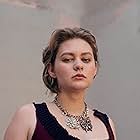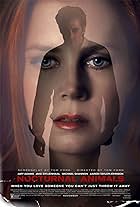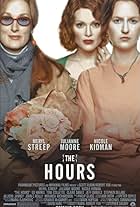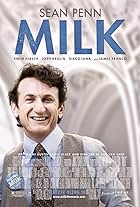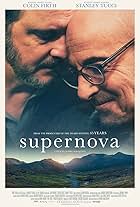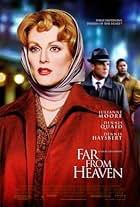An English professor, one year after the sudden death of his boyfriend, is unable to cope with his typical days in 1960s Los Angeles.An English professor, one year after the sudden death of his boyfriend, is unable to cope with his typical days in 1960s Los Angeles.An English professor, one year after the sudden death of his boyfriend, is unable to cope with his typical days in 1960s Los Angeles.
- Nominated for 1 Oscar
- 39 wins & 59 nominations total
- Director
- Writers
- All cast & crew
- Production, box office & more at IMDbPro
Storyline
Did you know
- TriviaOn February 21, 2010, when he won a BAFTA for Best Actor, Colin Firth's list of people to thank included the man who repaired his refrigerator. Firth explained that he'd decided to turn down the part, and had an email to director Tom Ford in his outbox, waiting to be sent. Then a man arrived to repair his refrigerator, and Firth had time to reconsider.
- GoofsSeveral fonts used did not exist in the 1960s. The university office door signs and the movie's titles use Gotham, introduced in 2000. The bank logo uses Trajan, created in 1989, and Gill Sans, popularized in the US in the 1970s.
- Quotes
George: [last lines; voiceover] A few times in my life I've had moments of absolute clarity, when for a few brief seconds the silence drowns out the noise and I can feel rather than think, and things seem so sharp. And the world seems so fresh as though it had all just come into existence. I can never make these moments last. I cling to them, but like everything, they fade. I have lived my life on these moments. They pull me back to the present, and I realize that everything is exactly the way it was meant to be.
- Crazy creditsThe production company, Fade to Black, is displayed in the opening, shown in white lettering outlined against a white background. It fades to white.
- ConnectionsFeatured in The Rotten Tomatoes Show: 2012/The Messenger/Fantastic Mr. Fox (2009)
- SoundtracksLe Serpent qui Danse
Lyrics by Charles Baudelaire
Music by Serge Gainsbourg
Performed by Serge Gainsbourg
Courtesy of Mercury France
Under license from Universal Music Enterprises
It is a bleak introduction to Tom Ford's adaptation of Christopher Isherwood's novel, a powerful examination of the struggle to get over a loss but what would you expect from a movie whose first screen title is "Fade to Black"? The movie is emotionally loaded and restrains itself so much you can sense the electricity before the storm, but we get to have a few sunny flashbacks to understand that George wasn't born a misanthropic sourpuss. That the film features a same-sex couple is almost incidental, there's no sex scene and the smaller moments the better: a cozy conversation on a sofa, a discussion about the past in a beach, yet "A Single Man" couldn't have been as powerful with a man and a woman and for that, you can't do without the film's context.
The story is set in the midst of the Cuba missiles crisis when the world's future was hanging on a thread and America was the leader of the Free World, but with a rather selective approach of freedom as far as personal lifestyles went. A man couldn't live his sexuality if it wasn't the "right one", living as a homosexual was an ordeal in the public sphere and in private, it was tougher to find someone. Yet George found one and could conceal under a façade of pure clean-cut British rigidity his real self. With Jim, he found not just love but authenticity in a world that relied too much on slogans (mostly political), appearances and hypocrisy. It's interesting that the couple in this film can work as a metaphor for being free or true to our nature under a society not much traditional as it was reactionary (American values against the Red Scare).
There's an important scene where George lectures his student about fear, using World War II and racism as examples, and the notion of fear is connected to causes that can be either real or factice. The point is that everything has a cause, not all the causes are real, but they exist as fabricated. What matters then is the truth, tending to it, whether through History or from experience: one of his student Kenny (Nicholas Hoult) hates the past and is scared by the future (during the Cuban crisis, many people were), what's left from it? Maybe the present and the way it might build him to his own realizations and understanding of the world. This is basically the premise of that harrowing journey where George contemplates his life and the probability of its termination.
And if anything, the film isn't about the struggles of homosexuals in the 60s, though there are references to the prevailing homophobia, it's about someone who lost the balance of his life, the personal tunnel to his own truth, the link between the present and the future, and condemned himself to isolation then suicide because there was no future to conceive with anyone. He has a friend named Charley (Julianne Moore), she's divorced, disillusioned about life, but she loves him and for all the joyful and fun moments they spend together (Firth and Moore have great chemistry), George can't connect the present with her to any bright vision of the future. The film says something about the value of the present as one step that makes you climb the stairs of your life. It's only after he meets again Kenny, the student who admires him (and a little more) that he starts feeling the stairs can be worth climbing.
But that's only an interpretation of the story, one must take the film at face value and appreciate its "present"; a man drowning in an ocean of loneliness that gives its full meaning to the title, so isolated a man that he actually raises the interest of people around him because -and maybe George doesn't realize it himself- he's still part of his world. The film makes no secret about George's planned suicide but it's expressed in an interesting way: he lives the last day at its fullest, staring at muscular tennis players' bodies as if he was photographing them in his mind, a beautiful blonde girl's hair, he caresses a dog who reminds him of his friend's. These moments are so intense that it might leave the impression that Tom Ford over-designed his film, made it too stylish for its own good as if he was trying to channel Bergman.
I didn't mind that actually, it's interesting that the more intensely George looked at his world, the more it meant his preparation to death, looking at the pink smog of L.A., he says that even the ugliest thing have a beautiful side, as if people focused on beauty had the ugliest thoughts and missed the best part of what living is about. When he meets the young Spanish model, it's romantic in an artificial and abrupt way, when he meets Kenny again, they go swimming, the present doesn't reveal any truth but shows him a way like it almost saved his life at a tragicomic moment involving a gun and the right pillow position to pull the trigger. If you can't envision a bright future, trust the present's small moments to take you there...
- ElMaruecan82
- Nov 19, 2019
- Permalink
Details
- Release date
- Country of origin
- Official site
- Languages
- Also known as
- Yolg'iz odam
- Filming locations
- Production companies
- See more company credits at IMDbPro
Box office
- Budget
- $7,000,000 (estimated)
- Gross US & Canada
- $9,176,000
- Opening weekend US & Canada
- $217,332
- Dec 13, 2009
- Gross worldwide
- $24,964,890
- Runtime1 hour 39 minutes
- Color
- Sound mix
- Aspect ratio
- 2.35 : 1
Contribute to this page



















